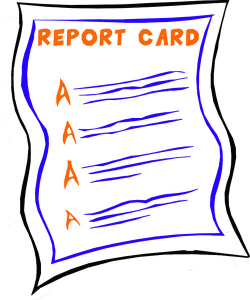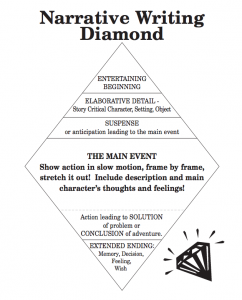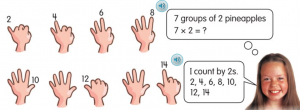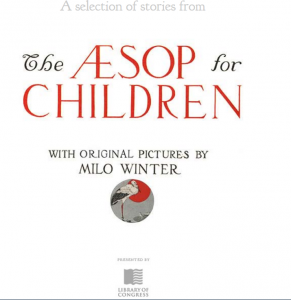Posted by kavery508 | Posted in Uncategorized | Posted on December 13, 2016
 Report cards will be coming home next week. A few notes about grading: Gone are the days of letter grades, and the system now works a little differently. A “3” is Achieving the standard, and that is similar to an “A” grade. A “2” means students are making continuous progress and can do it some of the time, or with help. A “4” is rare: it means students are working a grade level above grade 2 benchmarks. A “1” is even rarer: should any student have been heading there, we would have communicated it well before now (and no one is)!
Report cards will be coming home next week. A few notes about grading: Gone are the days of letter grades, and the system now works a little differently. A “3” is Achieving the standard, and that is similar to an “A” grade. A “2” means students are making continuous progress and can do it some of the time, or with help. A “4” is rare: it means students are working a grade level above grade 2 benchmarks. A “1” is even rarer: should any student have been heading there, we would have communicated it well before now (and no one is)!
To be achieving on this term’s report card, students should be reading on level 20K, and reading fluently while comprehending text on whatever level they may be at. In writing they should be able to write complete sentences; to show evidence of writing opinion and informative pieces; to tell a story about one event from their lives with a beginning, middle, and end in a clear manner; and to write with spaces, correct upper/lowercase letters, correct punctuation, and mostly correct spelling. In math, they should have passed math facts level 10; they should be able to make sense of and solve problems in daily work and on tests; and they should be able to accurately add and subtract 3-digit numbers with regrouping.
 Our reading focus this week is on Finding the Theme and Author’s Message. A reading theme is a big idea that we encounter again and again in literature, such as bravery or honesty or perseverance. The author’s message, on the other hand, is the moral of the story. We find evidence of it by looking at what the main character(s) learned, usually through failure. In The Gingerbread Man, for example, the theme is boastfulness. It’s a broad idea we find in many books, movies, and songs. The lesson to be learned (author’s message) is Don’t brag about yourself to others. We know this because when he did that, he came to a bad end. In any case, notice how looking at stories this way helps children to think deeply and critically about text, which is a big goal of reading instruction! You can try it at home with your young reader using any fiction story, and of course Aesop’s Fables are a great resource for finding the moral of the story. Here’s a great online collection from the Library of Congress!
Our reading focus this week is on Finding the Theme and Author’s Message. A reading theme is a big idea that we encounter again and again in literature, such as bravery or honesty or perseverance. The author’s message, on the other hand, is the moral of the story. We find evidence of it by looking at what the main character(s) learned, usually through failure. In The Gingerbread Man, for example, the theme is boastfulness. It’s a broad idea we find in many books, movies, and songs. The lesson to be learned (author’s message) is Don’t brag about yourself to others. We know this because when he did that, he came to a bad end. In any case, notice how looking at stories this way helps children to think deeply and critically about text, which is a big goal of reading instruction! You can try it at home with your young reader using any fiction story, and of course Aesop’s Fables are a great resource for finding the moral of the story. Here’s a great online collection from the Library of Congress!
 Adding description to narrative writing helps it come alive. Here are some great examples from this week’s work describing jack-o-lanterns made at Fall Festival from 1) Melanie 2) Vinnie 3) Teagan and 4) Destiny: 1) It was impossible to miss its spiky nose with a hole in the middle. I enjoyed the feel of its orange soft pompoms with pink and purple flowers. 2) When I ran my hands along its sides, they felt soft and smooth. I couldn’t help but notice its big, bald head! 3) Gazing closely, I saw brown and gld freckles on the pumpkin’s cheeks. I felt the smooth, pink button nose. 4) Its mouth was green and small and shaped like a spider! I enjoyed the feel of its purple and yellow fluffy boots. Fantastic!
Adding description to narrative writing helps it come alive. Here are some great examples from this week’s work describing jack-o-lanterns made at Fall Festival from 1) Melanie 2) Vinnie 3) Teagan and 4) Destiny: 1) It was impossible to miss its spiky nose with a hole in the middle. I enjoyed the feel of its orange soft pompoms with pink and purple flowers. 2) When I ran my hands along its sides, they felt soft and smooth. I couldn’t help but notice its big, bald head! 3) Gazing closely, I saw brown and gld freckles on the pumpkin’s cheeks. I felt the smooth, pink button nose. 4) Its mouth was green and small and shaped like a spider! I enjoyed the feel of its purple and yellow fluffy boots. Fantastic!

Chapter 6 of MIF focuses on learning multiplication facts of 2s, 5s, and 10s by teaching the connection between skip-counting and multiplication, and using that understanding to solve problems. To solve 8 x 2, for example, we want students to count by 2 eight times. It is a way of learning the meaning behind the numbers involved in multiplication instead of just memorizing facts (which has value, too, just not on its own). One way we teach this is to have students count pairs of objects. Next is counting on fingers while counting aloud by 2 (1 finger up gives you 2, or 1 x 2; etc.). Students will then be introduced to dot paper, which for this chapter shows arrays of 2s, 5s, or 10s. The example below shows 4 x 2. On homework, students should use dot paper by counting down the rows by 2s, then naming how many rows they counted. In this example, they should say “2, 4, 6, 8; I counted 4 times; 4 times 2 is 8.”
 See the homework resource folder for examples of each kind of dot paper that can be used at homework time!
See the homework resource folder for examples of each kind of dot paper that can be used at homework time!


